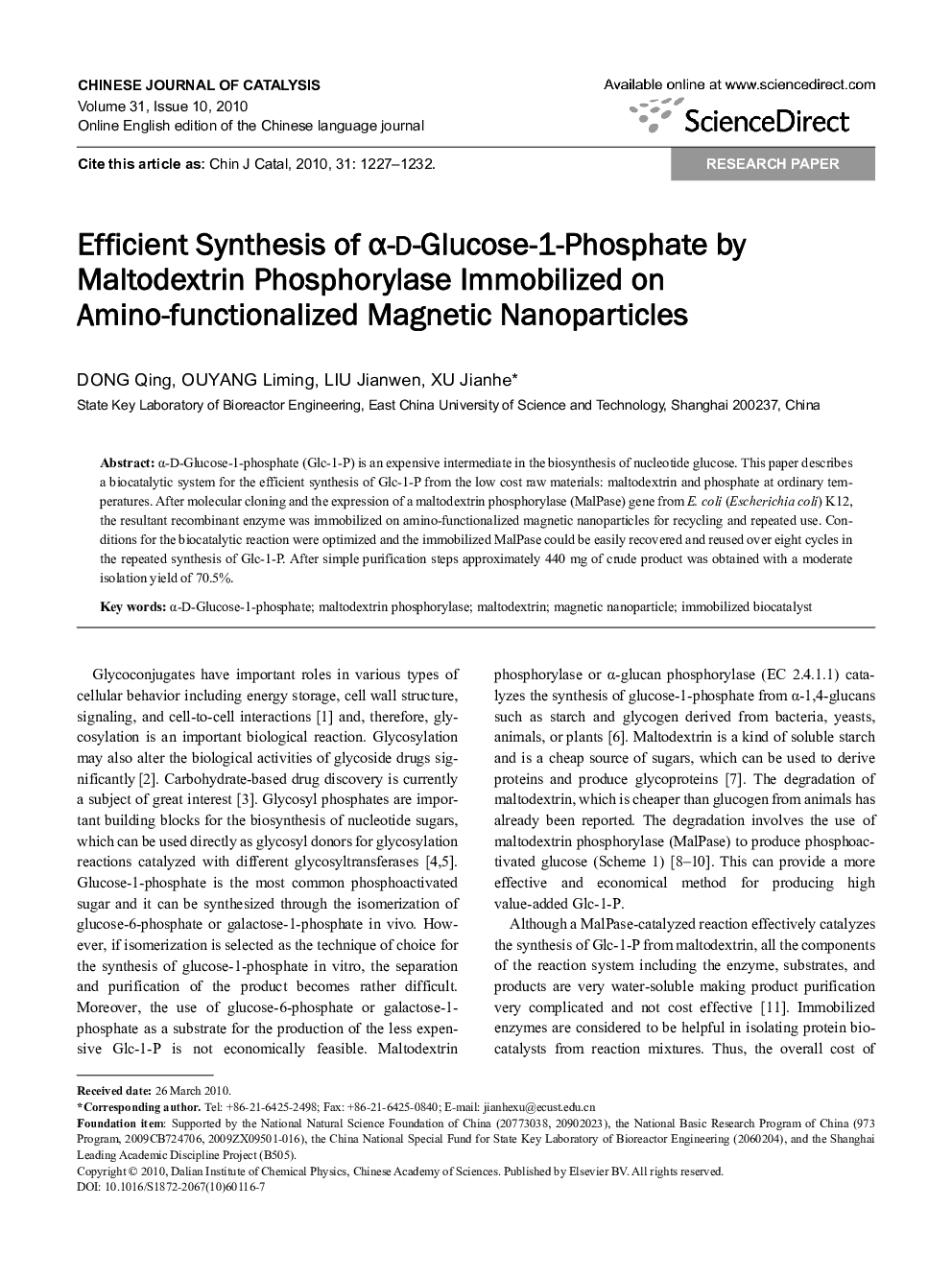| Article ID | Journal | Published Year | Pages | File Type |
|---|---|---|---|---|
| 60336 | Chinese Journal of Catalysis | 2010 | 6 Pages |
α-D-Glucose-1-phosphate (Glc-1-P) is an expensive intermediate in the biosynthesis of nucleotide glucose. This paper describes a biocatalytic system for the efficient synthesis of Glc-1-P from the low cost raw materials: maltodextrin and phosphate at ordinary temperatures. After molecular cloning and the expression of a maltodextrin phosphorylase (MalPase) gene from E. coli (Escherichia coli) K12, the resultant recombinant enzyme was immobilized on amino-functionalized magnetic nanoparticles for recycling and repeated use. Conditions for the biocatalytic reaction were optimized and the immobilized MalPase could be easily recovered and reused over eight cycles in the repeated synthesis of Glc-1-P. After simple purification steps approximately 440 mg of crude product was obtained with a moderate isolation yield of 70.5%.
摘 要:建立了以麦芽糊精和磷酸盐为底物, 在常温下合成 α-D-葡萄糖-1-磷酸的生物催化体系. 从大肠杆菌 K12 中克隆表达了麦芽糊精磷酸化酶, 并固定化在氨基修饰的磁性纳米颗粒上, 以便于酶的回收和重复利用. 在优化的反应条件下, 于 200 ml 体系中连续使用该固定化酶 8 批次, 催化合成了 α-D-葡萄糖-1-磷酸. 经过简单的纯化步骤, 最终得到 440 mg 产品, 分离产率为 70.5%.
Graphical abstractThis article presents the strategy used to immobilize maltodextrin phosphorylase onto amino-functionalized Fe3O4 nanoparticles for synthesis of α-D-glucose-1-phosphate.Figure optionsDownload full-size imageDownload as PowerPoint slide
